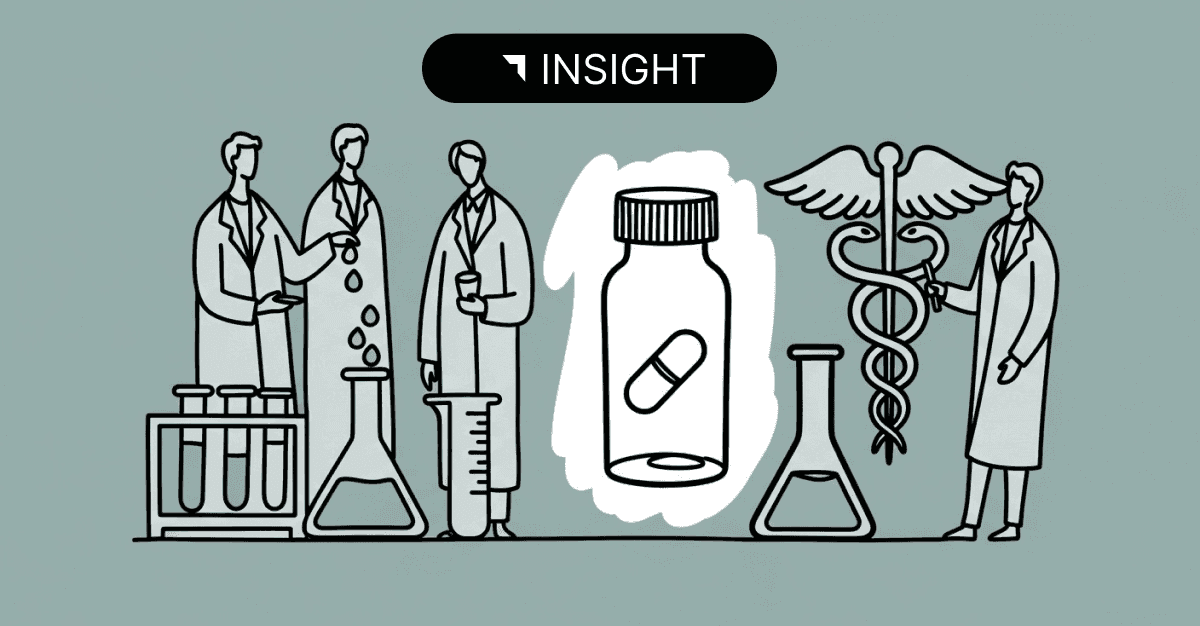
Complexities of USMCA Validation in the Pharmaceutical Industry
Why Pharmaceuticals Face Unique Pressure
Pharmaceuticals occupy a unique position under USMCA because they are essential for public health, heavily regulated, and strategically sensitive. Governments treat them not just as ordinary trade goods but as critical products, which means compliance requirements are applied with extra scrutiny.
Validation under USMCA is particularly challenging in this industry because pharmaceutical supply chains often involve cross-border inputs and processing steps that do not clearly meet tariff-shift rules. Active ingredients may come from Asia or Europe, while formulation and packaging occur in North America. Determining whether these steps amount to a “substantial transformation” is rarely straightforward.
The stakes of getting it wrong are unusually high. Compliance errors can trigger not only financial exposure in the form of duties, penalties, or clawbacks but also supply disruptions in products that patients and healthcare systems rely on every day. In pharmaceuticals, USMCA validation is more than a trade compliance exercise, it is a safeguard for both business continuity and public health.
Size of the Pharmaceutical USMCA Market
-
Trade Value:
- Pharmaceuticals account for tens of billions of dollars annually in cross-border trade under USMCA.
- The U.S. and Canada dominate in patented drugs, biologics, and advanced therapies.
- Mexico plays a central role in generics, contract manufacturing, packaging, and final dosage assembly.
- Pharma consistently ranks among the top five traded sectors in North America, making it a major compliance focus.
-
Manufacturers & Suppliers:
- U.S.: Around 2,430 businesses in brand-name pharmaceutical manufacturing, representing a highly fragmented but R&D-intensive market.
- Mexico: Roughly 400 laboratories active in pharma production, including 138 manufacturing facilities and 186 pharmaceutical firms.
- Canada: A smaller but strategic role, particularly in biologics, vaccines, and specialty therapies, with several major global players hosting facilities there.
- Supply chains are highly fragmented, involving dozens to hundreds of suppliers per company, from API producers and excipient makers to packaging firms and CMOs (contract manufacturing organizations).
-
HTS Coverage:
- Chapter 29 – Active pharmaceutical ingredients (APIs).
- Chapter 30 – Medicaments, vaccines, finished formulations.
- Chapter 38 – Chemical reagents, diagnostic kits, culture media.
- Hybrid products may also cross into Chapter 90 (e.g., prefilled syringes, inhalers).
-
Factory-Level Scale:
- A single pharmaceutical plant can produce hundreds or thousands of SKUs, with variations in dosage strength, formulation, and packaging.
- Each SKU may require separate classification and origin validation, multiplying the compliance workload.
- Plants often manage multiple APIs, excipients, and packaging flows simultaneously, each with different suppliers and documentation requirements.
- Unlike autos or SME tools, pharmaceuticals move in continuous daily shipments, creating constant compliance demands.
Classification Complexities
Pharmaceutical classification is one of the most challenging under the HTS. APIs typically fall under Chapter 29, while finished medicaments are classified under Chapter 30. But borderline cases are frequent and heavily disputed:
- APIs vs. Formulations: APIs (Chapter 29) may shift into finished medications (Chapter 30), but classification depends on concentration, dosage form, and therapeutic presentation.
- Biologics vs. Chemicals: Biopharmaceuticals such as monoclonal antibodies often fall under immunological products (3002.15), but interpretations vary on whether they should be treated as chemical substances (29) or biological medicaments (30).
- Intermediates and Precursors: Some salts, esters, or intermediates may be treated as APIs, while others remain in Chapter 29, creating disputes in origin validation.
- Combination Products: Drugs combined with devices (e.g., prefilled syringes, inhalers) may shift into Chapter 90, complicating duty and compliance analysis.
- Mixtures and Excipients: Additives can shift a product’s classification if they alter dosage form or therapeutic function.
How TIA Helps:
- Automates HTS classification across APIs, intermediates, finished formulations, and hybrids.
- Produces audit-ready memos documenting classification rationale for defensibility.
- Handles bulk SKUs, ensuring consistency across dosage forms and packaging variations.
Origin Rules and RVC
Pharmaceuticals often qualify under tariff-shift rules, such as APIs (Chapter 29) shifting into formulations (Chapter 30).
- Challenge: If APIs come from outside North America, final processing (tableting, blending, packaging) may not be considered a “substantial transformation.”
- Implication: A drug may appear “made in Mexico” but still fail USMCA origin rules because the API originates in India or China.
- RVC: Less common than tariff-shift but still relevant for some products, particularly complex formulations.
How TIA Helps:
- Provides structured analysis showing whether products meet tariff-shift rules.
- Allows companies to model different sourcing scenarios to anticipate origin outcomes.
- Documents decision rationale so preferential claims can be defended if challenged.
Supplier Data, Documentation, and Continuous Shipments
Pharmaceutical supply chains involve dozens of APIs, excipients, intermediates, and packaging inputs. Many smaller chemical suppliers struggle to provide accurate origin documentation, while larger firms may resist sharing cost structures. Under USMCA, Article 5.2 and 5.6 require valid certifications and five-year recordkeeping, with Article 5.9 authorizing retroactive verifications. This creates significant clawback risk if documentation is incomplete.
The challenge is compounded by the industry’s continuous shipment model. Pharmaceuticals do not move as one-time imports but in daily flows of generics, vaccines, and biologics across borders. Compliance exposure repeats with every batch, meaning that a single missing or invalid certificate can jeopardize preferential treatment for entire product lines.
How TIA Helps:
- Centralizes and organizes supplier certifications to simplify retention and retrieval.
- Flags missing or inconsistent certifications before they reach customs.
- Applies consistent classification logic across product catalogs, so recurring shipments use standardized, audit-ready records.
Public Health, Logistics, and Reputational Stakes
Pharmaceutical compliance failures under USMCA create risks that go beyond duties and penalties. Many products are time-sensitive and require cold chain handling, meaning customs delays tied to missing certificates or disputes can cause spoilage or shortages. This raises the stakes for both companies and public health systems that depend on uninterrupted access to essential medicines and vaccines.
At the same time, validation interacts with other regulatory frameworks — including FDA, Health Canada, and COFEPRIS approvals, as well as patent protections and labeling rules. A single misstep in classification or origin can ripple into clinical trial timelines, market access, or intellectual property disputes.
Finally, the reputational risk is uniquely high in this industry. A compliance lapse that disrupts vaccine supply or delays critical treatments can damage a company’s standing with governments, patients, and the public. For pharmaceutical firms, USMCA validation is not just a technical requirement — it is a board-level concern that touches revenue, regulation, and reputation simultaneously.
How TIA Helps:
- Minimizes delays by ensuring supplier certifications and classification memos are complete, consistent, and audit-ready.
- Centralizes compliance data in one platform, making it easier to coordinate across sourcing, compliance, and regulatory teams.
- Provides defensible classification and origin rationales, reducing the risk of disputes that threaten supply continuity and corporate reputation.
Enforcement and Divergent Interpretations
Customs enforcement is especially strict for pharmaceuticals because of their high value and public health role. The three USMCA countries, however, apply the rules differently. The U.S. often requires deeper transformation to grant origin, while Mexico and Canada may accept formulation or packaging as sufficient.
This divergence means a product can qualify for preferential treatment in one country but fail in another. For companies, that uncertainty is as challenging as the rules themselves — compliance strategies must anticipate multiple enforcement standards simultaneously, and even small gaps in documentation can trigger disputes.
How TIA Helps:
- Maintains consistent, audit-ready documentation across jurisdictions.
- Provides a clear rationale for classification and origin claims, reducing exposure when enforcement diverges.
Policy Shifts and Emerging Tariff Risks
Beyond the complexities of USMCA itself, pharmaceutical companies must also contend with policy volatility. On September 25, 2025, President Trump announced that starting October 1, 2025, branded and patented pharmaceutical imports would face a 100% tariff unless companies could prove they are actively building new manufacturing plants on U.S. soil. Under this definition, only firms with facilities already under construction would be exempt.
This policy underscores two critical points for executives:
- The scale of exposure — A 100% tariff transforms compliance from an efficiency exercise into a survival issue. For many companies, proving origin under USMCA may be the only practical way to avoid such steep penalties.
- The need for agility — As governments link trade policy to industrial policy and reshoring initiatives, origin validation and supply chain transparency will become tools not just for compliance but for strategic positioning.
How TIA Helps:
- Produces audit-ready classification and origin documentation to support preferential claims under USMCA.
- Enables companies to assess how sourcing and production choices affect eligibility under origin rules.
- Generates defensible records that strengthen a company’s position in audits or regulatory discussions.
Conclusion
USMCA validation in the pharmaceutical sector is uniquely complex because it blends technical classification challenges with high-stakes risks to supply continuity, public health, and reputation. From APIs and biologics to finished formulations and clinical trial materials, compliance demands are continuous, detailed, and unforgiving. For executives, the message is clear: origin validation is not a back-office function, it is a strategic necessity that protects revenue, ensures patient access, and safeguards corporate credibility in one of North America’s most heavily scrutinized industries.
Related News

September 5, 2025
Trade Compliance Heat Wave: DOJ Task Force Returns, Transshipment Crackdown, Chip Controls, and Tariff Tests
Read more →
July 22, 2025
Trade Policy, Enforcement, and Supply Chain in Flux: July 2025 Insights
Read more →
October 10, 2025